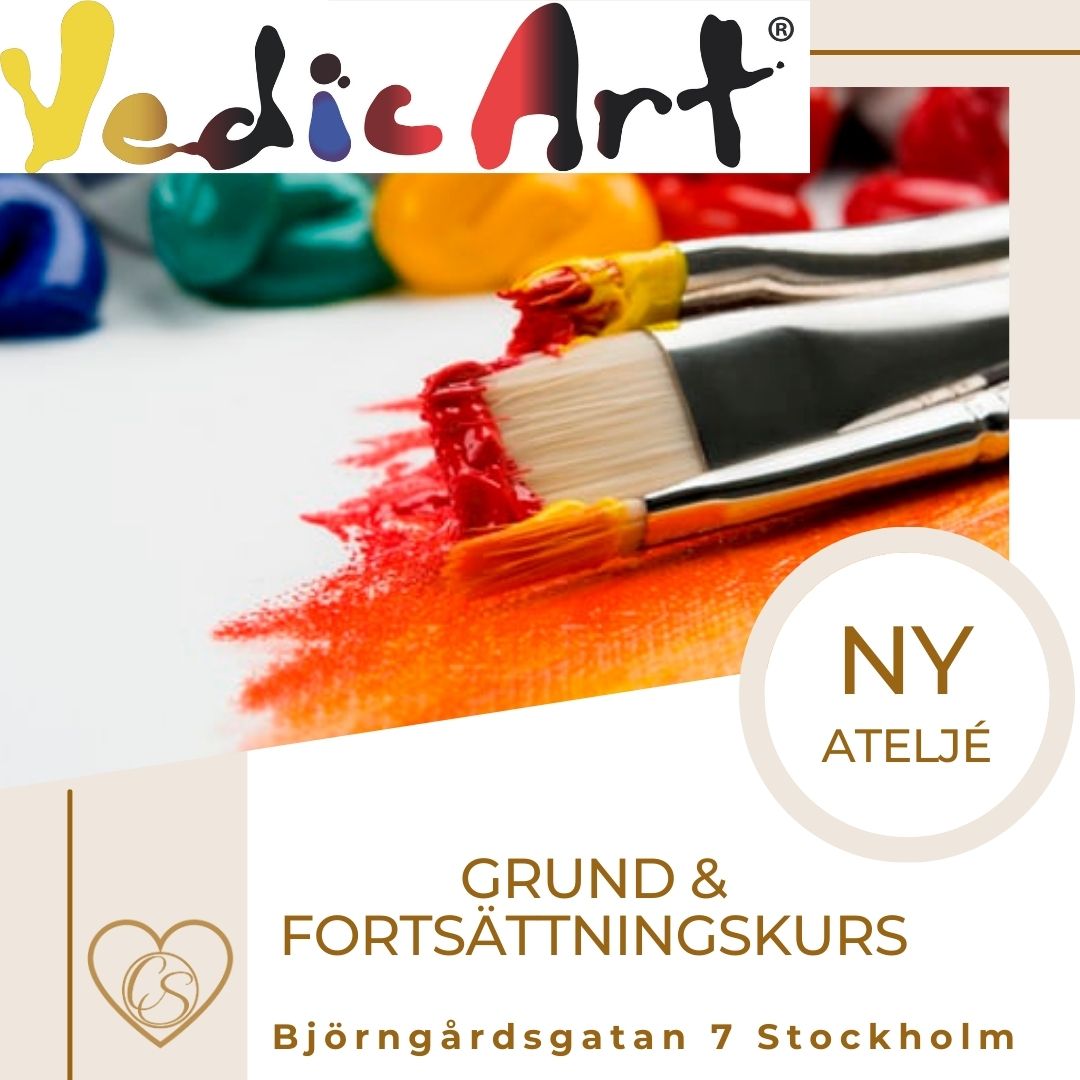
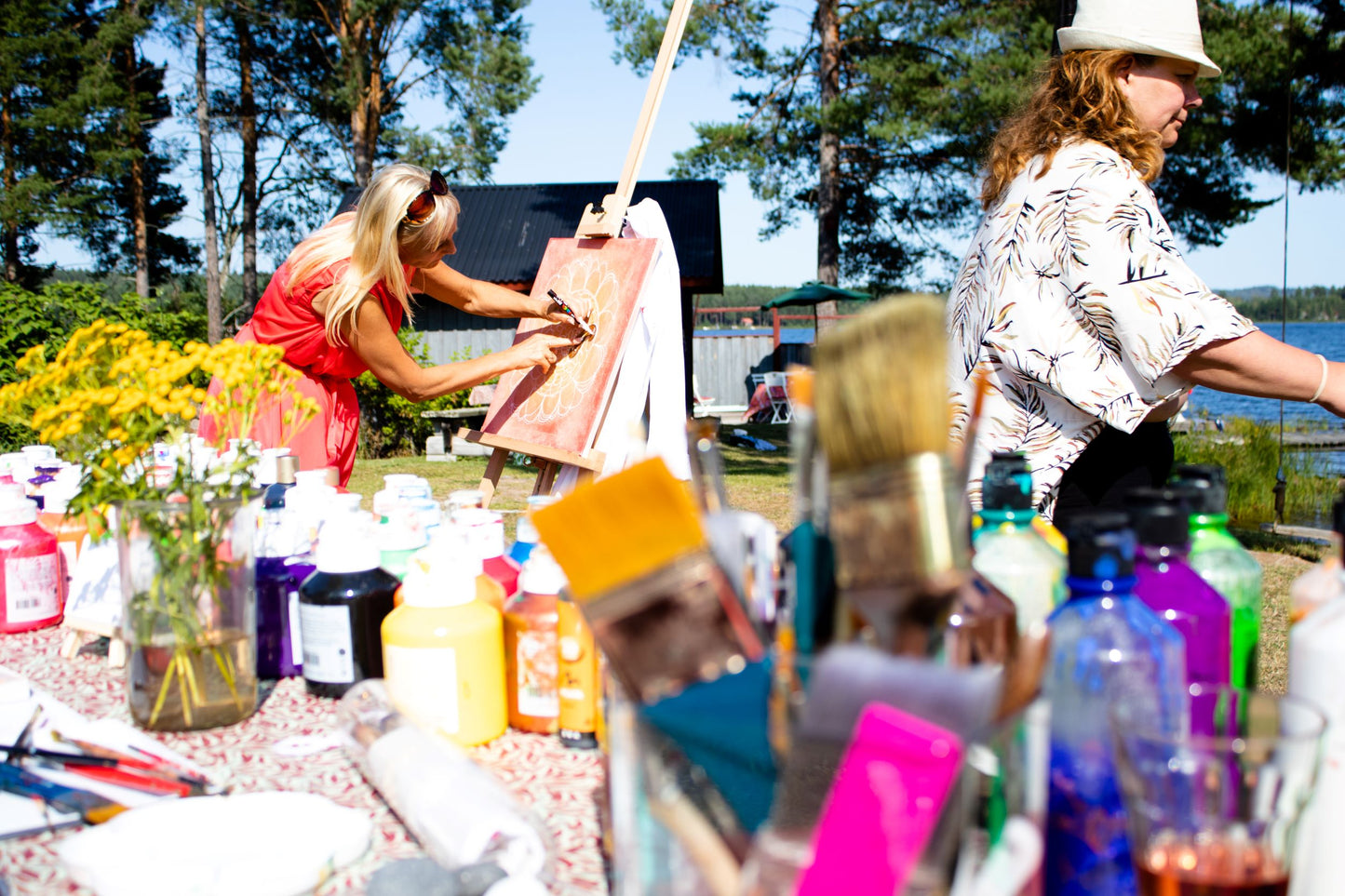


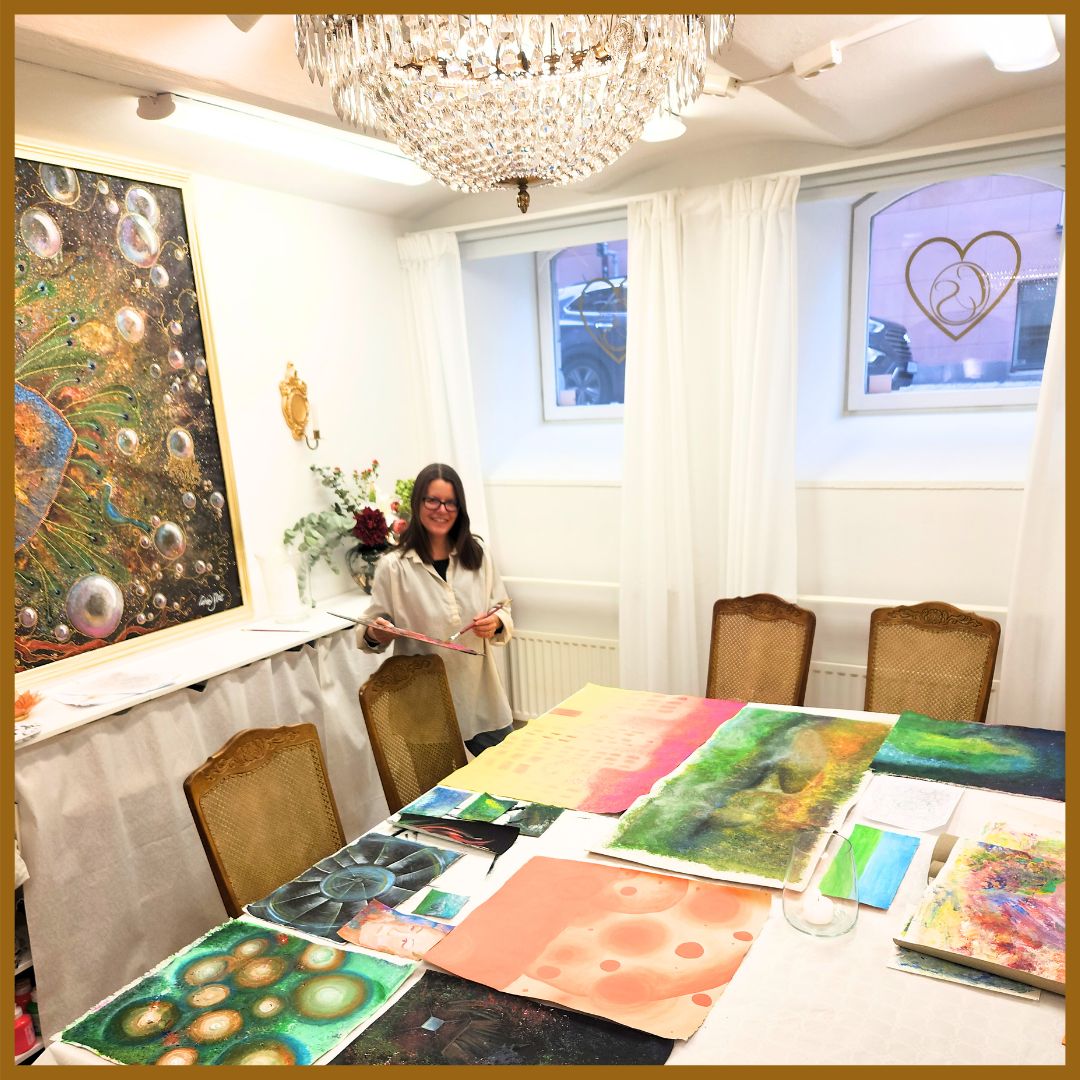







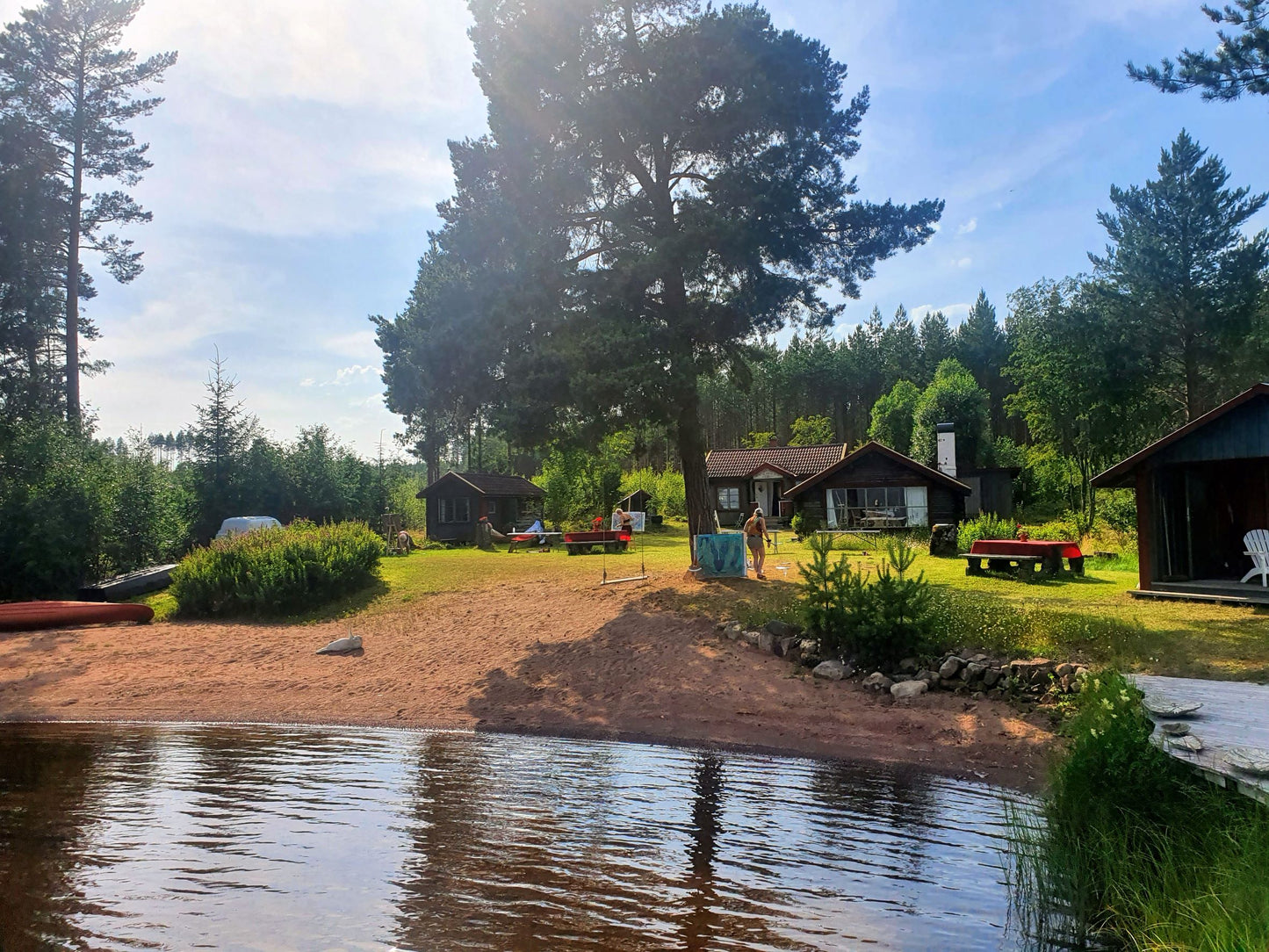
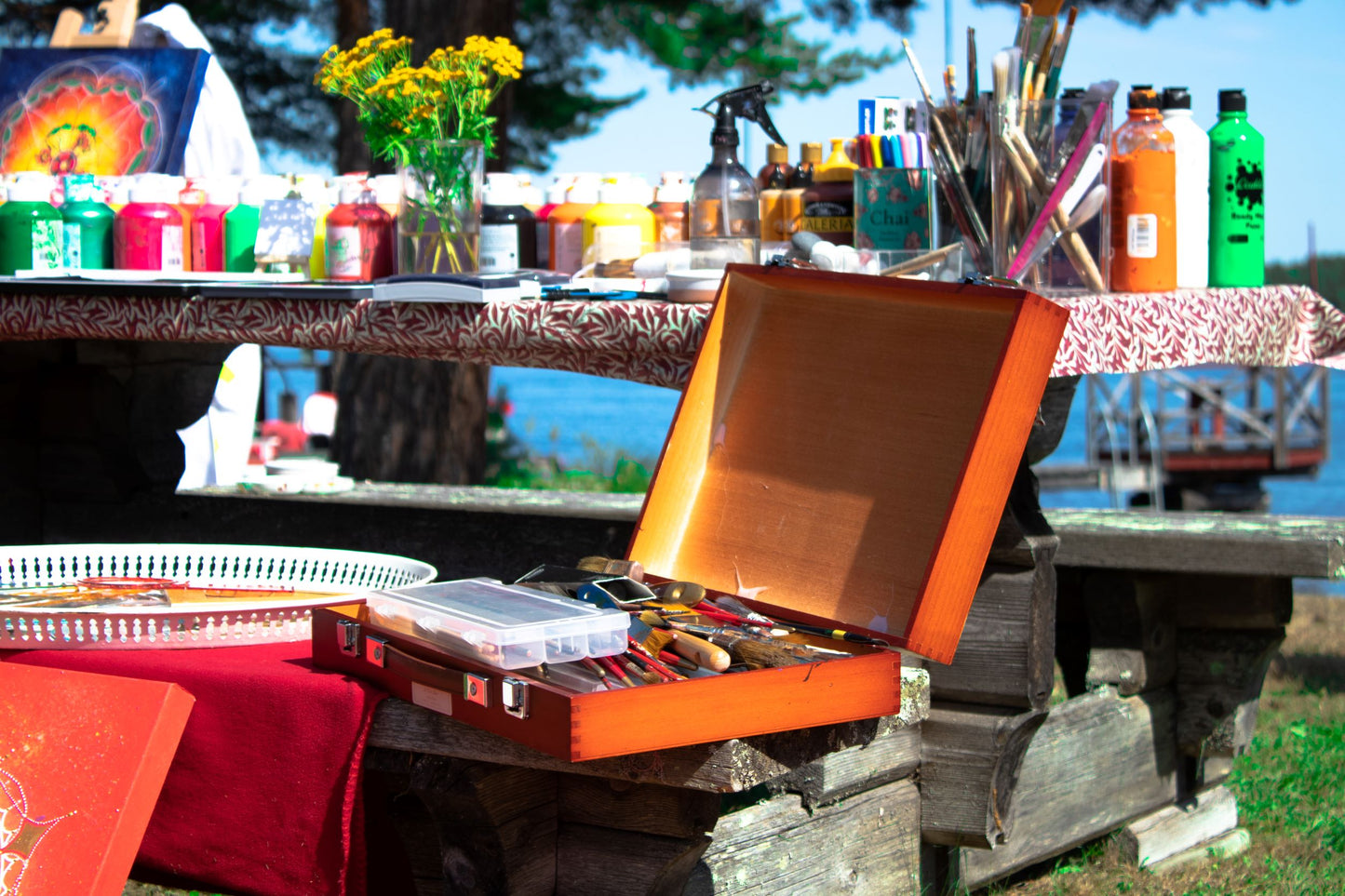






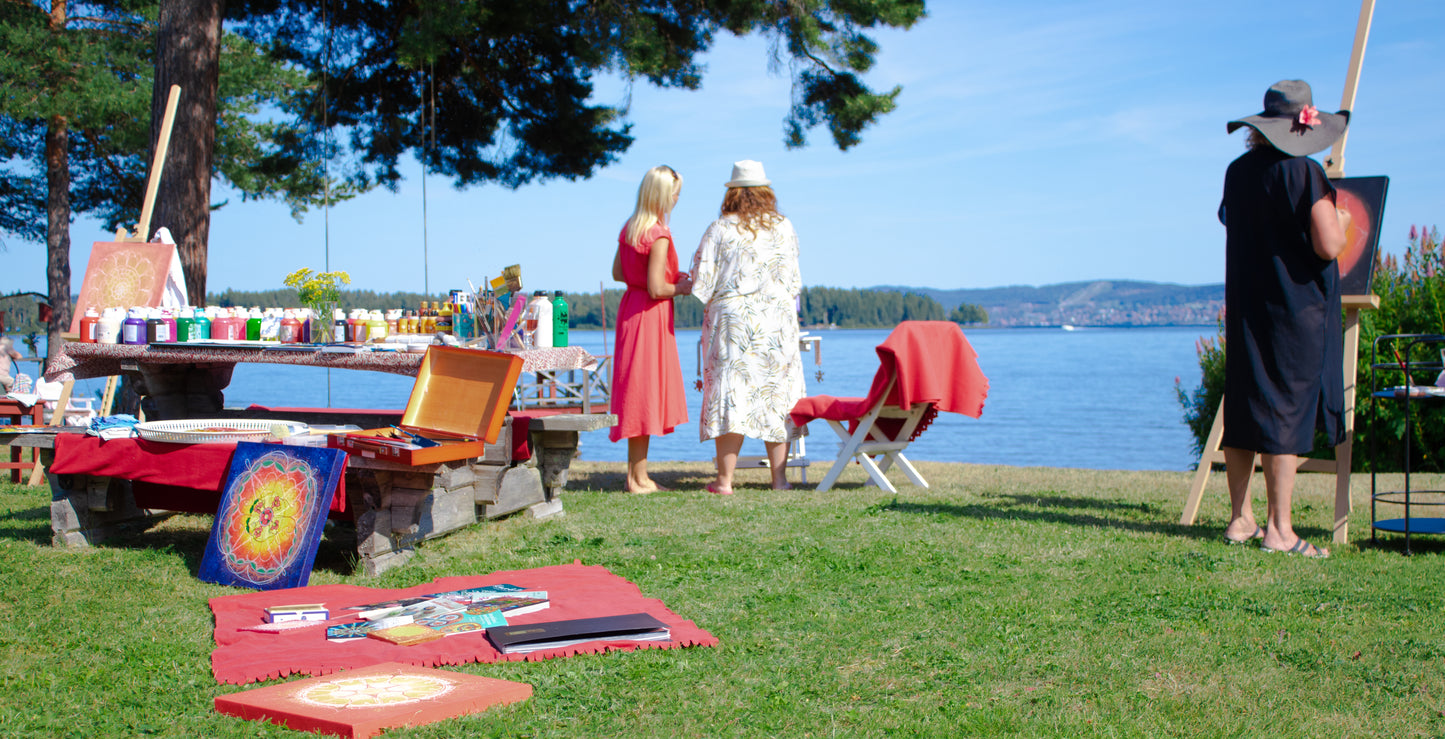

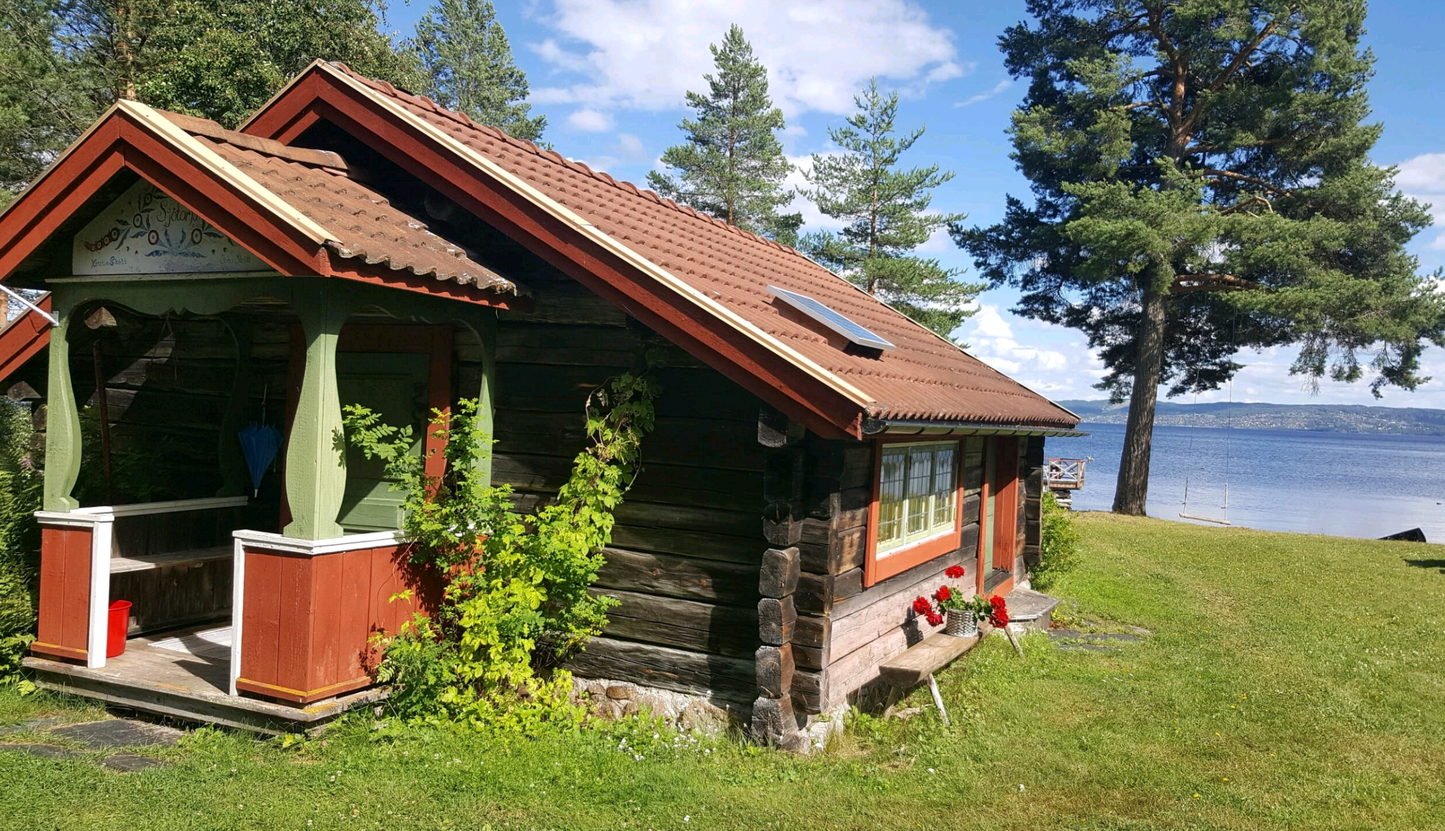


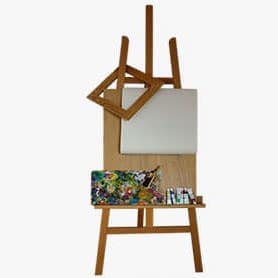
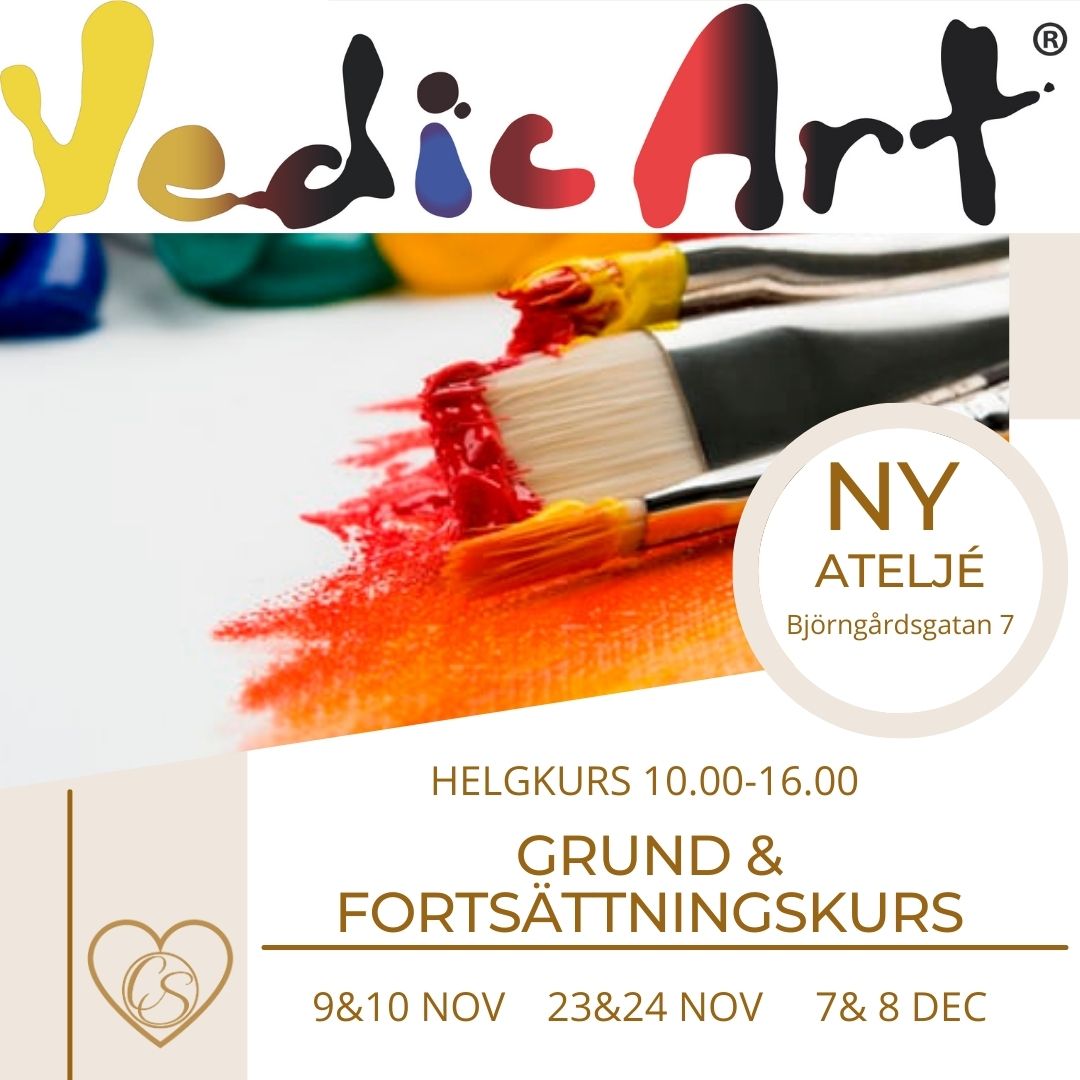
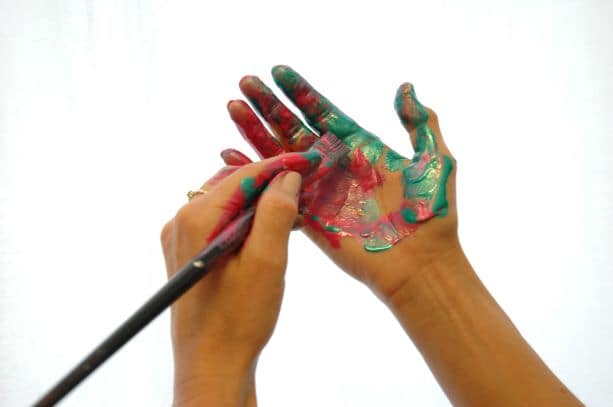
Vedic Art
In Vedic Art, Indian life principles are linked to the traditional school of painting and become a method, a path where painting and life go together.
Vedic Art is not about painting or painting in a special way. Nor is it linked to an evaluation of what appears on the screen. The chain of principles aims to guide us towards the personal, the very own expression!
The multi-thousand-year-old Vedic knowledge in India has many branches on its tree. For more than 30 years, the artist Curt Källman has nurtured one branch in particular, art. Curt is a traditionally trained artist at the Gerlesborg School in 1963 and at the Art Academy in Stockholm 1964-69.
In February 1988, Curt Källman established the Vedic Art School at Bosjökloster Castle in Höör. But it was already in 1974 that he received the 17 Vedic principles from the Maharishi, the well-known "Beatles yogi" and the founder of TM, Transcendental Meditation, who then asked Curt to lay a foundation for teaching the principles. And the Maharishi emphasized that it must be a stable foundation, it must last at least 2000 years…. So in 1988 that foundation was laid and teaching could begin.
Vedic Art is a way to achieve higher consciousness through art creation, a creation beyond performance and technical requirements.
"When we stand in front of a white canvas and are about to start painting, we might think "I don't have enough knowledge to express myself in pictures. I have to learn technique first, I have to practice”. Then we can ask ourselves the question: "Did the great Creator need to practice on another creation first before creating the universe?"
says Curt Källman.
What does it mean to paint yourself to a higher consciousness? What is Vedic Art really good for, in a larger perspective?
"The brushes in the sky and the feet on the earth" - Achieving higher consciousness and going into oneself does not mean distancing oneself from everyday life, on the contrary. We take our increased consciousness into everyday life, among people, that's where it should be useful. Many talk about the new age, about a paradigm shift. But we ourselves have a responsibility to manage this shift, it is not possible without our participation. It is about our life.


























